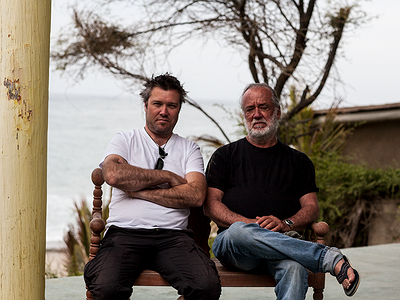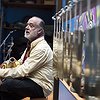Can you talk about a breakthrough work, event or performance in your career? Why does it feel special to you? When, why and how did you start working on it, what were some of the motivations and ideas behind it?
About twenty years ago, I had this bizarre dream. It was not an ordinary dream but a premonitory one that showed me exactly the theme of my next concert “Zona Neblina” (Fog Zone) and which resembled the sound of dreams. Even the structure of the music and the way to perform it were given to me in that dream. It was a whole new concept of contrasting the dream “reality” with the actual “reality”. The play was made up by 9 dreams and 8 awakenings and each dream had a counterpoint in reality. The sounds of the dreams were previously recorded and then played whereas the sounds of reality were played live. On top of it, the dream had to be performed on stage by actors recreating living still paintings. For the first time in my career, I had to produce a show that had been sent to me in the form of a dream with very specific technical requirements and also detailed creative and musical references. It was a huge effort that completely changed my way of doing things. It was a call to integrate pure sound, with structured music and painting in the form of still theatrical images. A story of dreams confronted with the so-called reality. What is real?
There are many descriptions of the ideal state of mind for being creative. What is it like for you? What supports this ideal state of mind and what are distractions? Are there strategies to enter into this state more easily?
The ideal state of mind that fosters creativity is to stay wide open to the unknown. It's through silence that we enter into other realities or dimensions. To master silence takes years of hard work. The mind is always busy and distracted. Therefore, to make this mind quiet and still is not easy. We have to feel this need in order to achieve a silent state of mind. On the other hand, distractors are very useful obstacles in the sense that if the distracted mind finds out that someone is observing it, it will dissolve or hide at least for a while.
Music and sounds can heal, but they can also hurt. Do you personally have experiences with either or both of these? Where do you personally see the biggest need and potential for music as a tool for healing?
Music has many aspects to offer and one of them is indeed healing. It is difficult to put into words, but the underlying concept again is very simple: Silence. Through silence and the ability of deep listening you will ultimately be capable of transforming your spirit. The most ordinary noises of city life distract your need of harmony and thus, healing is about balance.
There is a fine line between cultural exchange and appropriation. What are your thoughts on the limits of copying, using cultural signs and symbols and the cultural/social/gender specificity of art?
In Peru we have many examples where this fine line between cultural exchange and appropriation gets blurred. Let’s take the case of the Peruvian cajón. As you may know the cajón is an instrument created by Afro-Peruvians in the 19th century as a way to getting around a law enacted by the Spanish Inquisition that prohibited African descendants to play drums made of animal skin. In order to keep alive their music tradition, the Black Peruvian community decided to make a drum without animal skin from the wooden boxes (cajones) the Spanish used to store wine bottles. Thus, a new instrument was created out of a cultural interaction and yet, here comes the paradox. One century later, the Spanish flamenco guitar player Paco de Lucía, came to Lima and was invited to a party hosted by the Spanish ambassador. At the party, Caitro Soto -one of the greatest Peru’s cajón players- started playing for Paco who was fascinated by the sound of this rare instrument. I was there too, so I can confirm first-hand this really happened. De Lucía quickly realized that the cajón was ideal for flamenco so he took it to Spain and as a result, the Flamenco cajón was born. At the time, they mentioned nothing about its Peruvian origin and therefore the cajón is wrongly known by many as a Spanish invention. What is the lesson learned from that experience? That ethics should be in place, especially when it comes to showing respect to a nation’s cultural heritage. This is a topic that deserves further discussion.
Our sense of hearing shares intriguing connections to other senses. From your experience, what are some of the most inspiring overlaps between different senses - and what do they tell us about the way our senses work?
Our senses are all connected, yet there is still much to explore in this field. For a long time, I have been trying to pair the hearing sense with the eyes. There is a possibility of learning to visualize sounds and also the other way around: to listen to the colours in a painting or to listen to the atmosphere of a sculpture. This is also part of my search in music, a continuous work-in-progress for life.
Art can be a purpose in its own right, but it can also directly feed back into everyday life, take on a social and political role and lead to more engagement. Can you describe your approach to art and being an artist?
My approach is a big question mark. It is an open question. What is the art of living? What is the art of dying?
Music can express the inexplicable. What can it express about life and death which words alone may not?
Music and feelings are deeply related. Perhaps the only truth that music can express, is that it connects you with your most inner feeling. So, to be touched by music is to be in a constant state of bliss. There is no such thing as life and death, only presence.

Previous page:
Part 1
Part 1





